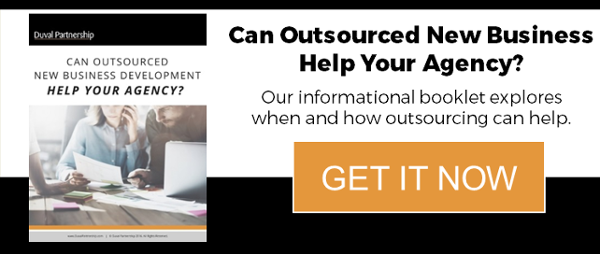Could your agency have a case study problem?

Let’s be clear: your case studies are critical to closing new business; both as supporting documentation in your lead generation emails, and as proof of effectiveness for prospects visiting your website. I have seen everything from typos—in subheadings and call-outs, no less—to stated results that would not pass muster in a basic undergraduate statistics course. Don’t neglect your case studies!
Case studies have been ranked among the most effective content marketing tactics for B2B marketers for multiple years (including in the 2016 B2B Benchmarks, Budgets and Trends Report for North America from the Content Marketing Institute). Not surprisingly, case studies are also ranked the top content type for buyers, with 78% of buyers accessing case studies when researching purchases in the past year (DemandGen Report- 2017 Content Preferences Survey).
Not only do case studies enjoy a coveted spot among the most effective content formats, but they present an opportunity for you to “sell” your agency to prospects—without actually doing any selling! Passively building trust and generating interest...case studies have everything an agency could want from a new business generation tool. And yet, they often appear to escape the same level of scrutiny and high standards as the work you would deliver to a client.
In a case study, you get to tell your prospects about your agency, for example:
- What type of brands you work with (include a profile: geography, size, niche, consumer target, etc.). TIP: If you have a strength in working with a particular class of brands, i.e., challenger brands or startups or Midwestern brands, be sure to identify that quality about the client in your case study.
- How long did you work with a brand? If you were retained by a brand significantly past average agency tenure, be sure to mention that.
- Your breadth of services and solutions for brands lets prospects know what you are capable of. Seeing this in the applied context of a case study can be more helpful than just viewing your list of services and capabilities, which is more abstract.
- How do you problem-solve? What is your process? Let prospects know the reasons why you took a particular course of action to help them understand how you approach your work.
- What do your clients think of your work? Are they happy with the results?
Let’s assume your creative is great. But great creative is table stakes. Your case study must show the why and how, the strategy behind the creative, and the results it got. If not, you could be doing your agency more harm than good.

Quick tips for your agency case studies:
Don’t skip process and strategy
- Don’t just embed a campaign video that was shown on Facebook and think that it will speak for itself.
- You have to show why you chose to put a video on Facebook.
- Who did you target?
- Why did you choose the theme and other details of the video, and how did that relate to the brand’s target goals?
- How was your campaign successful in meeting those goals?
- Were there missteps? How did you make adjustments?
Focus on business outcomes
- It’s all about your compelling numbers, metrics, data, statistics, and facts. Proof. Avoid weak numbers such as net number of followers or “likes” on social media, which are generally perceived as meaningless.
- If you can’t get business outcomes, at least show numbers for the campaign performance to illustrate the impact. But you really need business outcomes.
- If you constantly struggle to get business outcomes and performance data from your client, write results capture into your contract—you have to be able to show your work, and the creative is only part of it.
- Don’t forget that it’s not only about what you helped your client achieve, but also what you helped them avoid. What would have been the cost to the brand had you not found a solution to their problem, or helped them reach their goals?
Revisit how your case studies are organized
- Does your language match the terminology others use when referring to a category?
- Do your categories still make sense? If you have not updated your categories in a decade, it is safe to assume you need to revisit them.
- Are your case studies easy to find, searchable, and do they link to other related work?
- Are your case studies indexed by product type, brand type, industry, or target consumer group? If you have a lot of experience targeting Generation Z for various brands, perhaps that should be a unique category for your case studies. Above all, be guided by what will be useful for your prospects.
Format for clarity and consumption
- Case studies on your website should be brief. Ideally, just a snapshot in a couple of paragraphs with key points, with a video or graphic and some key results called out. If you have enough story and results to go longer than that, serve it up to prospects via a click to “read more” link or pdf download with additional details. Even then, it should not be more than three or four pages at most.
- No typos. If you can’t create an error-free case study to sell your agency, what are you going to do for their brand?
- No ambiguity about your role, overstating or implying you were responsible for a campaign that your firm had only a minor role in. This erodes trust.
- Your results should be clear. If your stated outcomes raise more questions than anything else and confuse rather than illustrate, it implies you don’t understand your results. Or worse, that you don’t understand what success looks like, or how to gauge it.
- Does your case study format make sense? If you have a video-format case study, that’s great, but know that not everyone wants to watch your video. So pull out the key takeaways and create a text version as well.
Do your case studies tell a story?
- Although they are brief, case studies should always tell a story. That story should be written from your customer’s perspective, not your agency’s perspective. In the story of what you did for your client, your client is the hero, and your agency is a supporting character. Explain the situation from the hero’s perspective:
- What was your brand trying to accomplish?
- What challenges did they face?
- What were they doing before they decided to engage you?
- Why wasn’t that working?
- Why did they decide to bring your agency on board?
- How did your agency help this brand meet or exceed their goals?
- The case study is a story of your customer’s success. Incorporate customer quotes that speak to your results.
- Do you have press coverage, awards, blog posts, or other content that relate to a given project? Why not link to them?
Case study maintenance
One you have compelling case studies that have been optimized and well-organized on your site, don’t forget to update, reformat, reorganize, and cycle them out periodically as needed.
Going after a new vertical? Revisit your case studies to see what you have to offer. Put yourself in your new prospective client’s shoes. If you make a connection with one of these prospects and they come to your website, will they have reason to think your agency serves brands like theirs? Do you need to make some tweaks to your positioning and case study organization to gain their confidence? Draw the connections so that they don’t have to.

Case study roll-ups: A whole is greater than the sum of its parts
Sometimes it makes sense to roll multiple examples of your work into industry-specific case studies. For example, here’s what we’ve done for the auto industry, including this recent example and two older examples (that we probably wouldn’t let stand on their own because they are a bit too dated, but they are still really well known). And maybe we’ll throw in a small campaign we just did for a motorcycle brand that is sort of an outlier and doesn’t stand as well on its own, but we think the strategy and results are relevant and of interest to auto brands.
A roll-up format can make a much more compelling case and can allow you to highlight strengths, experience, and capabilities that otherwise might not come across as clearly. They are a great way to leverage tangential or shallow expertise for entry into a new area. Roll-up case study formats could also work for a target customer audience (women, Gen Z, etc.), a type of tactic/strategy, or some other common category. Get creative!
When is the last time you scrutinized your agency’s case studies?
It's never too soon to think about your future new business:
Read more:
- What Are Agencies Doing to Win New Business?
- 5 Things That Will Prevent Your Agency from Thriving in the Future
- 10 Mistakes Agencies Make that Hurt New Business Efforts
- 9 Reasons Why Your Agency Isn't Getting New Business
- Will Your Agency Website Generate New Business, or Sabotage It?
Image credits: Wow results © iStockphoto/gilaxia; Case study components © iStockphoto/Chunumunu; Sum of parts © iStockphoto/wildpixel.



